Make like a tree, and compost
December 30, 2011
The stockings are down, and all that remains of those delicious holiday cookies are a few lonely crumbs. It’s probably time to figure out what to do with that rapidly-drying tree.
No matter where you live in Los Angeles County, there are easy ways to give Christmas trees a green retirement by turning them to mulch.
For unincorporated areas, the L.A. County Department of Public Works will pick up trees curbside through January 13, on normal collection days. The city of L.A. will take trees placed in or beside green waste bins; see the Bureau of Sanitation’s website for details. For other cities and a list of sites that accept drop-offs, visit www.cleanla.com or call 1 (888)-CLEANLA.
Trees should be stripped of all lights, ornaments, tinsel, nails and anything else that might be hanging on.
Besides cleaning house and protecting the environment, there’s another reason to recycle your tree—preventing fires. According to the United States Fire Administration, dry or neglected Christmas trees start 240 fires annually, causing fatalities and millions in property damage.
This video shows how fast a scotch pine can transform a family room into an inferno. So play it safe and recycle!
Posted 1/4/12
Resolve to check out these freebies
December 29, 2011
Whether you overspent this holiday season or just made a New Year’s resolution to be thriftier, have we got some deals for you.
Looking for a free supply of nicotine patches?
The Los Angeles County Department of Public Health has you covered, as part of its L.A. Quits program to help smokers kick the habit. (Call 1-800 NO BUTTS to get a one-month supply, gratis.)
Public Health also offers a wealth of other freebies, ranging from “Germbuster Activity Books” for kids to in-home tests for sexually transmitted diseases. HIV tests are free, too. And so is a remarkably comprehensive library of downloadable educational brochures, on topics from antibiotics and bed bugs to West Nile virus and whooping cough.
Cultural bargain-seekers are in luck as well. The Los Angeles County Museum of Art is offering free admission on Monday, January 16, in honor of Martin Luther King Jr. Day. LACMA’s “Andell Family Sundays” program resumes on January 8, with a free-with-admission art-making project called “Circle of Animals.”
More free art-making and performances are offered through “World City at the Music Center.” Next up: Khac Chi Ensemble & Korean Classical Music and Dance Company on Saturday, January 15.
Another source of potential giveaways is the Department of Public Works, which has been known to hand out free sandbags at fire stations during the rainy season as well as other freebies ranging from free oil filters to reusable shopping bags (every shopper’s must-have accessory to keep up with the county’s plastic bag ban.) Check the department’s Clean LA website to learn about upcoming events featuring giveaways in your area—as well as recycling programs for tires and motor oil and hazardous waste and electronics roundups.
But wait, there’s more! Some lucky gardeners will have a chance to win a free composting bin at one of Public Works’ upcoming Smart Gardening workshops. (Look for the green-starred events on this list.) And the county’s Waterworks Districts also give out conservation-minded freebies such as low-flow showerheads and high efficiency water nozzles; check here for more information, and download a colorful brochure on drought-tolerant plants while you’re at it.
There’s more than simple generosity behind all this county largess. The giveaways are intended to influence behavior—for the greater good.
As Public Works spokesman Michael Kaspar put it: “We’re encouraging people to integrate sustainable, environmental practices into their everyday lives.”
Posted 12/29/11
Putting the squeeze on Lap-Band ads
December 20, 2011
County supervisors squared off Tuesday with promoters of the Lap-Band, featured on billboards all over Southern California but drawing increasing attention from officials concerned that the publicity blitz is obscuring a wide range of medical dangers.
After a series of sharp exchanges with representatives of 1-800 GET THIN, supervisors approved a motion by Supervisors Mark Ridley-Thomas and Zev Yaroslavsky to bring greater scrutiny to Lap-Band marketing and procedures. They directed county staff to, among other things, “develop a plan to identify medical products and services that are being marketed in a dangerously misleading manner.”
The supervisors’ action comes after the U.S. Food and Drug Administration recently sent letters to eight Southern California weight loss clinics and the 1-800 GET THIN marketing firm, warning that the company’s ubiquitous advertisements do not provide enough information about the risks of gastric bypass surgery or about the need to change eating behavior to lose weight over the long term.
“The FDA’s warnings raise significant concerns about the vulnerability of all County residents to these advertisements, particularly those who suffer from morbid obesity and wish to find a cure,” the motion said. “Medical experts and the FDA agree that the Lap-Band procedure is an aggressive treatment for obesity and should only be considered in clinically severe obesity cases.”
Robert Silverman, the president of 1-800 GET THIN, told supervisors that his firm is taking steps to bring its billboards and radio and TV spots into compliance with the FDA requirements. An attorney for the company said its surgery centers “have a better track record than just about anybody else.”
But supervisors were openly frustrated as they tried to find out more about how 1-800 GET THIN operates, in terms of referrals to clinics and responsibility for disclosing risks to potential clients.
“It’s been a long time since a witness or member of the public has come to that table and has obfuscated as consistently and persistently as you have today,” Yaroslavsky told the 1-800 GET THIN representatives. “I did not come here as a person who had any fundamental suspicion one way or the other about what you were doing. I leave here now thinking you are hiding something.”
The FDA’s action was prompted by Dr. Jonathan E. Fielding, the county’s top public health official, who last year asked the agency to investigate whether widespread Lap-Band promotion by 1-800 GET THIN was misleading.
The motion approved by supervisors Tuesday directed the Public Health Department to report back on what it is doing to get the word out about “safe and effective alternative methods to achieve and maintain a healthier weight.”
“There is no panacea for obesity, including the Lap-Band weight loss procedure,” the motion said. “However, there are proven strategies, when sustained over time, which can help people achieve a healthier weight, and decrease the risk for diabetes, heart disease and other chronic diseases.”
The motion also directed the County Counsel to provide legal options on steps the county could take to “ensure truthful advertising of aggressive obesity treatment procedures in unincorporated areas.” And it instructed the Chief Executive Office to pursue legislation to increase supervision and oversight of clinics that perform “aggressive and invasive obesity treatment cosmetic procedures.”
Posted 12/20/11
The Rock cometh—no, really
December 20, 2011
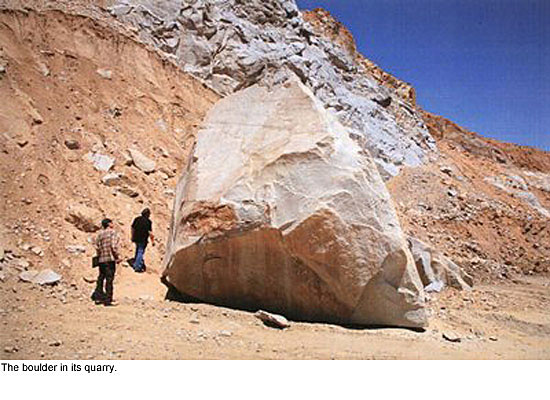 After months of postponements, the 340-ton boulder that the Los Angeles County Museum of Art has been awaiting since August has cleared what museum officials hope will be its final road blocks and is now scheduled to roll shortly after the first of the year.
After months of postponements, the 340-ton boulder that the Los Angeles County Museum of Art has been awaiting since August has cleared what museum officials hope will be its final road blocks and is now scheduled to roll shortly after the first of the year.
The route hasn’t changed, nor has the means of transit. But officials in the many municipalities through which the shrink-wrapped colossus will travel have at last all signed off on its passage, according to LACMA.
“Yes, it’s true,” laughs museum spokeswoman Miranda Carroll. “The permits are all secured now and all the cities have said okay. Everything is set.”
The boulder, destined to be the centerpiece in Michael Heizer’s massive new LACMA installation, has been waiting patiently at a Riverside quarry while officials in four counties tried to coordinate the bureaucratic details of its 100-mile move. The biggest snag involved the complexities of parking the rock on city streets during the daytime, when it will not be on the move.
Also complicating matters was that the transportation logistics turned out to be more complicated and time consuming than expected, forcing a process that normally takes more than a year into a span of six months. But with help from an assortment of players, including members of Supervisor Zev Yaroslavsky’s and Supervisor Don Knabe’s offices, LACMA officials have set a date. Just forgive them if they aren’t ready yet to go public with it.
“We’ll be getting the message out before the holidays, so people know what’s happening, but we just want to be absolutely certain,” says Carroll.
Stay tuned.
Posted 12/8/11
Bowl, bath and beyond
December 20, 2011
The 2012 summer lineup has yet to be unveiled, but Hollywood Bowl patrons can already start looking forward to one sure-fire crowd-pleaser:
New and improved restrooms.
A $3 million makeover, unanimously approved Tuesday by the Board of Supervisors, calls for reengineering restroom layouts, replacing plumbing fixtures and in general rethinking how to make the intermission bathroom break a better, brighter part of the concert-going experience.
Bathroom traffic has long tended to freeze up outside the first stalls, so bold new graphics inspired by the Bowl’s Art Deco architectural style are being developed to let patrons know that they should keep moving in order to get to more facilities inside.
The design as currently proposed would include state-of-the-art sustainable features, such as waterless urinals and lightning quick Dyson hand dryers. The green theme wouldn’t end there. Green floors are being proposed as a way of bringing a suggestion of the outdoors into stylish white-black-and-stainless-steel interiors. Indirect lighting would help illuminate what are now dark and dated spaces.
There are other practical improvements envisioned as well, such as new partitions to provide greater privacy around the urinals.
“We’re trying to really increase the experience, the magic of the Hollywood Bowl” by making the restrooms “more accessible, more usable and lighter,” said Mark Rios of Rios Clementi Hale Studios, whose firm is undertaking the renovation project during the Bowl’s off-season. (The firm also designed the new Civic Center park, now under construction as part of the Grand Avenue Project.)
Julie Smith-Clementi, who is heading up the Bowl bathroom project for Rios Clementi Hale, said the idea is to keep things durable while losing the current “park restroom” ambiance. “Because it is the Bowl, it’s dressed up a little bit,” she said of the new look being developed.
In all, a dozen restrooms—six men’s, six women’s—will be renovated at the county-owned facility. The money for the refurbishing will come from Proposition A park improvement funds.
It’s high time for a makeover, according to Russ Guiney, director of the county Department of Parks and Recreation, which operates the Bowl in partnership with the Los Angeles Philharmonic.
“These facilities show signs of deterioration due to their age and the extremely frequent usage during the performance season,” Guiney said in a letter to supervisors. The loo re-do “will enhance the function and appearance of the facilities for patrons and help to reduce maintenance costs.”
The supervisors’ action Tuesday enables the Philharmonic Association to obtain funding for the project while the final design planning progresses.
Posted 12/20/11
Meet the 405 Project’s utility player
December 14, 2011
Bonnie Verdin knows where the wires are buried. Also the sewer pipes, cable conduits and gas lines.
And with the 405 Sepulveda Pass Project heading into its most intensive, multifaceted construction phase yet, she’s under pressure to get it all moved, as quickly and safely as possible.
As Metro’s “third party administration supervisor” on the project, Verdin is a real power player, in every sense of the word. She and her team are charged with making sure that the complex network of utilities running under Sepulveda Boulevard and other construction areas is relocated in ways that satisfy Caltrans regulations, city policies and staffing levels, neighborhood noise standards and the contractor’s need-it-yesterday timetable.
Talk about Mission Impossible.
“The heat is on my back because our contractor needs to get going,” she says as she gets ready to tackle one of the bigger upcoming challenges: moving a 6-inch gas line and an 8” crude oil line in West Los Angeles to clear the way for construction of new “flyover” ramps at Wilshire Boulevard.
Other massive and costly relocation jobs have been averted thanks to design changes as the project has progressed. That means, for example, that a 96-inch water line near the Getty will be staying put, thanks to a redesign that moved the construction far enough to the west to avoid the line.
Upcoming work on the Wilshire ramps and around the Getty are key as the project seeks to make up for lost time, some of it due to the scrapping of a plan that would have built a new Mulholland Bridge over the freeway before tearing down the old one. The reversal of that plan led to last summer’s “Carmageddon,” which Verdin watched from the comfort of her Whittier home.
While the rest of Southern California regarded the Mulholland Bridge demolition with trepidation because of the planned lengthy shutdown of the freeway, Verdin had another preoccupation: an 8-inch high-pressure gas line running through the bridge. With onsite crews monitoring the gas line, it came through the demolition unscathed. (The process will be repeated next year when the other side of the bridge is torn down.)
It’s not all about what lies beneath. Sometimes the job requires taking overhead power lines underground—an aesthetic bonus in the long run but potentially disruptive to the neighborhoods involved while the utility relocation work is going on.
Then there’s the responsibility of running interference among the 20-plus utility owners and agencies involved—from AT&T to Verizon, with everyone from Chevron to the Los Angeles Department of Water and Power in between.
“You can see the complexity and congestion,” she says with a bit of understatement. (For a look at just how complex, check out this Metro graphic of subterranean Sepulveda Boulevard.)
Even when everybody’s on board, she still has to help broker who gets first dibs on working on a given stretch of the project at a given time—something that’s cropped up when project contractor Kiewit Pacific Co. and the city Department of Water and Power both have crews ready to go with different missions to accomplish.
Verdin, 55, who previously was in charge of utility relocation for the Orange Line, has been with Metro for 21 years. In 2008, she started work on the 405 project, which will add a 10-mile northbound carpool lane along with an array of other improvements. The project is set to finish in 2013.
Her first move, as any household contractor knows, was to get it touch with DigAlert for a full picture of the subterranean utility landscape.
Then it was time to determine who was responsible for every piece of it. Establishing what’s known as “right of occupancy” was essential to figuring out who would foot the bill for moving each line and pipe. (Because it’s a joint Metro-Caltrans operation, the complex rules governing the relocation effort mean that some of the costs are paid from the project budget and others are borne by the entities that own the lines. Some $44 million is currently budgeted for utility relocation in the project budget, with millions more coming from individual utility owners.)
Verdin’s academic background is in food and nutrition sciences, but her work in utility relocation has provided a steady diet of diplomatic challenges.
“I would say that my job is to broker consensus, really, among the parties,” she says. “It teaches one patience and persistence.”
Posted 12/14/11
Bag ban coming to a minimart near you
December 14, 2011

Supporters of plastic bag ban rally before Board of Supervisors' vote last year. Photo/Los Angeles Times
The Los Angeles County Board of Supervisors may have officially declared Thursday to be “A Day Without A Bag” in the county, but at the 7-Eleven on Las Virgenes Road, the holiday hasn’t exactly taken hold.
“We go through more than a hundred plastic bags a day,” says store manager Andrew Kassar. “People rarely—well, actually, I’d say people never come in here and use their own bags.”
That will change January 1, as a number of municipalities, including Los Angeles County and the City of Calabasas, where Kassar’s store is located, swing into the second phase of local bans on single-use plastic bags.
The first phase, in effect since July, stopped the distribution of the light, ubiquitous—and polluting—bags in large supermarkets and pharmacies. The ordinance allowed these retailers to charge a dime apiece for paper bags to cover the costs of compliance and of stocking the paper bags themselves.
The next phase extends the same rules to smaller drug stores, convenience food stores and smaller retailers and grocers. To that end, the county Department of Public Works this week will be dispatching teams of “Eco Elves” to pass out free reusable bags, while supplies last. (Click here for a list of dates and locations throughout the county.)
“We’ve been notifiying our customers,” says Franco Hasroun, manager of Calabasas Liquor and Market. “Most of the bags we use are plastic, though, so we’ll see how it goes.”
The county’s bag ban covers only stores in unincorporated areas, but it was written to allow the county’s 88 incorporated municipalities to extend it by easily enacting ordinances of their own.
Malibu had a ban in place when the county ordinance was written but since then, Long Beach, Santa Monica and Calabasas have cracked down on the proliferation of single-use bags. Now bans are in various stages of passage in more than a half-dozen of the county’s other cities, including the City of Los Angeles.
The California Supreme Court made passage of such laws easier for cities this summer, ruling that cities could forego lengthy and expensive environmental impact reports in determining that their ecosystems would be better off without the proliferation of single-use bags.
That lawsuit, brought by a pro-plastics organization against a Manhattan Beach ban, had been closely watched by cities statewide. The court decision unleashed a flood of municipal legislation. In Manhattan Beach, the disputed ordinance was reinstated and will be implemented on January 14.
However, the plastic bag industry has continued to push back. In October, for example, the South Carolina-based plastic bag maker Hilex-Poly and four residents filed suit against the county, arguing that the 10-cent charge for paper bags violates a new state law that reclassifies local fees as “taxes” and requires a two-thirds majority vote to raise them.
Pat Proano, assistant deputy director for the Department of Public Works’ environmental programs division, says that the few complaints he has received about the first phase of the county ordinance were from callers “who were concerned that this was a new county fee of some sort.”
“But it isn’t,” Proano says. “The ten cents being charged by the store is retained by the store—it doesn’t go to the county.” The lawsuit is pending in Los Angeles County Superior Court, with action expected sometime next year.
In the meantime, store managers say, the bag ban—so novel when it was passed this summer—is becoming an increasingly mundane fact of life.
“Mostly, everybody just brings their own bags now,” says Cynthia MacNeil, front end manager at the Albertson’s supermarket in Calabasas. “It took a couple of months for people to get into the habit, but we don’t hear many complaints these days. I think they’re just used to it now.”
Posted 12/13/11
Santa Monica Mountains man on the move
December 14, 2011
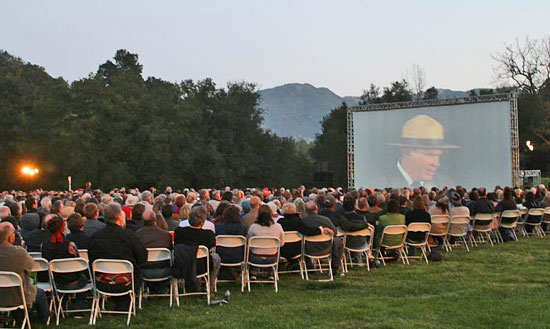
On the big screen, Woody Smeck introduces a sneak preview of Ken Burns' National Parks documentary series.
Woody Smeck may speak softly, but he carries a big reputation.
With his wide-brimmed hat and low-key eloquence, Smeck has become the public face of the Santa Monica Mountains National Recreation Area and in many ways its staunchest guardian.
As superintendent of the country’s largest urban national park for more than a decade, Smeck has presided over the recreation area as it added thousands of acres of new public open space. Working with partners from every level of government as well as those from community and non-profit groups, Smeck has helped shape everything from firefighting practices to educational outreach to preservation guidelines for sensitive wildlife habitats.
And he has been a tireless advocate for the 153,750-acre recreation area, appearing in this video and countless other forums to explain the complexity and importance of the vast natural preserve at the edge of the one of the world’s largest cities.
Now he’s getting ready to to make his mark on another national treasure. In April, he will become Yosemite National Park’s new deputy superintendent. And those who’ve walked the path with him here are already feeling the loss.
“I’m so sad,” said Kim Lamorie, president of the Las Virgenes Homeowners Federation, which honored Smeck with its “Citizen of the Year” award in May.
“There is only one Woody Smeck.”
In honoring Smeck, Lamorie credited his “quiet but persuasive ability to finesse funding” of new open space acquisitions. Future generations, she said, will “revel in the wonder of the wild and wonderful resources you have preserved.”
Geoffrey Given, who heads the advisory board for the Santa Monica Mountains campus of the educational program NatureBridge, said Smeck’s impending departure is “a huge loss for Santa Monica [but] a huge gain for Yosemite.”
“He has been an unbelievable advocate and supporter of what we do,” Given said. “At all of our fundraising events, he’d show up in uniform with his flat-brimmed hat on.” Smeck also put his money where his hat was, backing the organization’s educational outreach with funds from his own agency’s budget, Given said.
“I think he has made historic contributions to the National Recreation Area,” added Joe Edmiston, who as executive director of the Santa Monica Mountains Conservancy has worked closely with Smeck for years. “His shoes will be very difficult to fill.”
In announcing the appointment, Yosemite Superintendent Don Neubacher said Smeck “has the ideal background to helpYosemite achieve unequalled operational and innovative excellence.”
Smeck said Neubacher first reached out to him about joining the Yosemite team about 1½ years ago. With his youngest daughter still in high school, the timing wasn’t right initially. But now that she’s graduating at the end of this school year, Smeck decided to accept the offer.
He’ll head to Yosemite solo in early April and will live in park service housing until his wife, Karen, can join him, probably in July. They plan to buy a home in Mariposa.
The new position could put Smeck in line for greater executive responsibilities down the line—either at another national park or in Washington, D.C.
But he said he’ll miss his Santa Monica Mountains stomping grounds, where he got his professional start in 1991 as a young landscape architect with degrees from Cal Poly Pomona. Smeck reached the recreation area’s top job in 2001. He still marvels that he was able to get there without first transferring to other points around the National Parks system.
“People told me not to expect to stay [in one location] very long,” said Smeck, now 49.
But stay he did—long enough to rub shoulders with influential people ranging from TV documentarian Ken Burns to President George W. Bush.
Bush’s visit in 2003, he said, was a high point—a recognition of the power of collaborative work toward a common goal.
“It was a great opportunity to talk to him about how partnerships work, how cooperative management works, and he genuinely listened to what I had to say,” Smeck said, recalling a 45-minute hike into the Rancho Sierra Vista area of Point Mugu State Park with Bush and a small group that included Supervisor Zev Yaroslavsky. “To get a presidential visit…was very uplifting for everyone.”
He said he’s also proud of completing a general management plan that “provides a unifying framework for preservation and stewardship” of parklands going forward. That plan, created with various state partners and the Santa Monica Mountains Conservancy, established a “cooperative vision” that has informed an array of other actions, including blueprints for fire management and land protection.
His career is a natural outgrowth of an outdoorsy childhood in California’s Central Valley. “I spent my summers hiking and camping in the Sierra Nevada Mountains—especially Sequoia National Park,” he said. “By the time I was 21, I had experienced most of the Sierra Nevada wilderness.”
His first day on the job in the Santa Monica Mountains National Recreation Area started inauspiciously when he got lost trying to find the Rancho Sierra Vista trailhead.
“Back then, you had to drive through residential areas and gravel roads to find the obscure parking lot,” he said. “One of my first assignments was to develop a new entry road and trailhead from Potrero Highway. Today, I’m happy to report that visitors have a very scenic entry drive and wonderful staging area with good signs, drinking water, and clean restrooms to start their park experience at Rancho Sierra Vista.”
As he prepares to venture north to the world-renowned glories of Yosemite’s Half Dome and Bridalveil Fall, he acknowledged that he’ll miss the lesser-known but equally beloved natural treasures he’ll be leaving behind in the Santa Monica Mountains.
“Oh wow, there are so many incredible places. If I had to pick one, the place that’s the closest manifestation of heaven for me is the Old Boney Trail in Point Mugu State Park,” he said. “It is just such a pristine, wild, raw, natural environment. It’s as if you’ve been transported into another world. It is spectacular.”
For Smeck’s photo of the Old Boney Trail and some of his other favorite sights in the Santa Monica Mountains, check out a gallery of his photos below.
Posted 12/14/2011
Making merry, L.A. County-style
December 14, 2011
It’s that time again, as L.A. County jingles, dances and harmonizes its way to seasonal good cheer by way of the 52nd Annual Los Angeles County Holiday Celebration.
The free festivities take place from 3 p.m. to 6 p.m. on Saturday, December 24, at the Dorothy Chandler Pavilion in downtown Los Angeles.
More than 20 choirs, music ensembles and dance companies spanning the cultures of L.A. County will perform. There will be Mexican folk dancing by Grandeza Mexicana, Klezmer-style Hanukkah songs from The Shpil, Korean fan dancing with Kwan-Gyu Lim Dance Company and even some holiday funk with Mandrill.
The concert was initiated in 1959 by the late Supervisor Kenneth Hahn, who made the event a family tradition.
Last year, the celebration changed from a 6-hour-long format to a 3-hour show, and organizers experimented with using wristbands for entry. This proved unnecessary as there was ample space for all, so seating for this year’s 3-hour show will be “first come, first served,” with no reservations needed. Event organizers suggest arriving before doors open at 2:30 p.m. to enjoy additional entertainment in the plaza.
The concert is produced by the Los Angeles County Arts Commission as a gift to the public from the L.A. County Board of Supervisors. Parking is free in the Music Center garage, and directions to the venue are available online. Those who can’t make the show can watch a live broadcast on KCET or listen in to 90.7 FM KPFK.
Posted 12/14/11







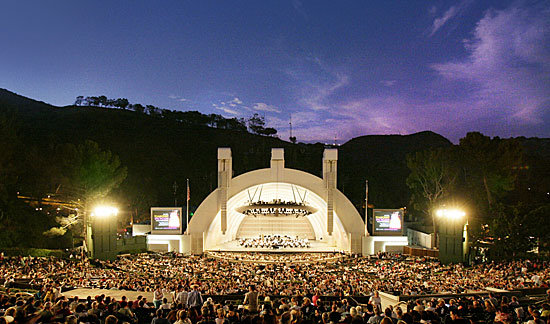
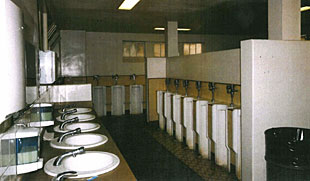
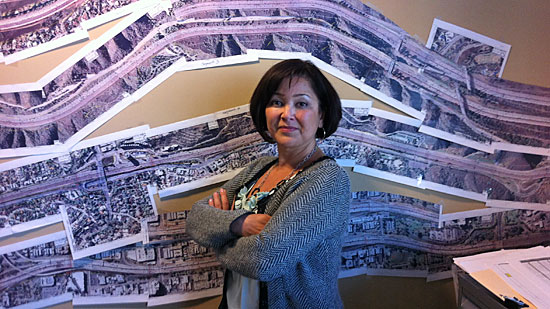

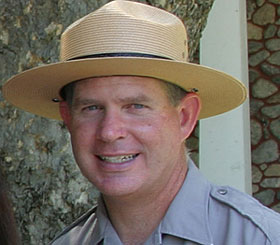












 Check for the latest closure information
Check for the latest closure information








